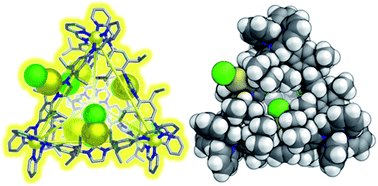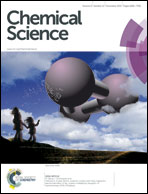AuICl-bound N-heterocyclic carbene ligands form M II4(LAuCl)6 integrally gilded cages†
Abstract
The incorporation of an N-heterocyclic carbene (NHC) moiety into a self-assembled MII4L6 cage framework required the NHC first to be metallated with gold(I). Bimetallic cages could then be constructed using zinc(II) and cadmium(II) templates, showing weak luminescence. The cages were destroyed by the addition of further gold(I) in the form of AuI(2,4,6-trimethoxybenzonitrile)2SbF6, which caused the reversibly-formed cages to disassemble and controllably release the AuI-NHC subcomponent into solution. This release in turn induced the growth of gold nanoparticles. The rate of dianiline release could be tuned by capsule design or through the addition of chemical stimuli, with different release profiles giving rise to different nanoparticle morphologies.



 Please wait while we load your content...
Please wait while we load your content...